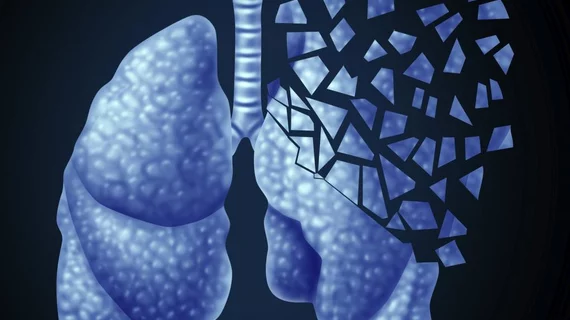Pinpointing CT features of coronavirus can determine patients' disease severity
Patients diagnosed with a severe infection from the coronavirus show different features on their computed tomography scans compared to those with milder cases. Experts believe pinpointing these subtleties will help clinicians improve screening efforts and stratify individuals according to their risk.
That’s one of the conclusions put forward by a team of Chinese specialists who retrospectively analyzed 73 patients with varying disease severity, zeroing in on their imaging findings. The results, published March 12 in the European Journal of Radiology, suggest the modality still has a critical role to play in managing COVID-19 as the number of cases continues to grow in the U.S.
“CT imaging can demonstrate typical features making the diagnosis of COVID-19 quite likely, which can help to rapidly screen patients and to stratify the patients' severity to quickly develop effective treatment strategies,” Kai-Cai Liu, with the University of Science and Technology’s China Infection Hospital, and colleagues wrote.
The researchers noted that reverse transcription-polymerase chain reaction testing and gene sequencing of sputum, throat swab or lower respiratory tract samples remains the “gold standard” for diagnosing the new virus. These approaches, however, take hours to complete and can’t assess the severity of the disease.
“Chest CT scanning can provide rapid screening and assess the severity,” Liu and colleagues noted.
With this in mind, the team had three senior radiologists analyze the initial and follow-up CT features of patients with the virus who were examined at one of six Chinese hospitals. The cohort included individuals ages 5 to 86 years old, and 74% had a travel history to or from Wuhan.
Below are the findings from their analysis:
- Six individuals had mild pneumonia and no “obvious” abnormal CT findings, or mild changes of lung infection.
- Each of the 43 patients with common disease severity (fever and signs of respiratory infection; pneumonia changes on CT) had multiple ground-glass opacities in the periphery of their lungs— with or without “interlobular septal thickening.”
- Twenty-one patients were diagnosed with severe COVID-19; 16 cases revealed extensive GGO and five contained pulmonary consolidation.
- Three cases were considered severe. Those scans showed an extensive “white lung” with a complete or partial collapse of the organ, or in only one area of the lung, along with pleural effusion.
The researchers noted that their study did have some limitations, including an uneven scan time between patients, which could have led to bias in image feature descriptions. Despite this, they argued that CT can be a big help in the fight to control this growing pandemic.
“In conclusion, CT imaging can play an important role in the early diagnosis and disease stratification of COVID-19,” the authors added. “Patchy ground-glass opacities and large consolidation located in the peripheral part of both lungs are the typical CT manifestations. The size and type of CT abnormalities are related to disease severity.”
Read more of Health Imaging’s coverage of the coronavirus here, including recent recommendations from the American College of Radiology.

